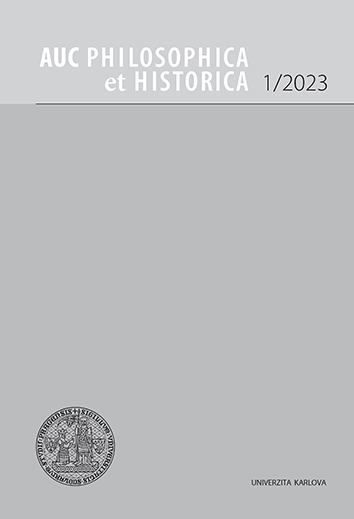AUC Philosophica et Historica (Acta Universitatis Carolinae Philosophica et Historica) is a multidisciplinary academic journal focused on the humanities with more than 50 years of tradition.
The journal is indexed in CEEOL, DOAJ, and EBSCO.
AUC PHILOSOPHICA ET HISTORICA, Vol 2009 No 1 (2009), 87–106
Umění krajiny – krajinný design jako estetický proces
Jan Hendrych
DOI: https://doi.org/10.14712/24647055.2018.14
published online: 12. 01. 2018
abstract
The balance of ecological and productive functions of the landscape, keeping at the same time high aesthetic and cultural values was the product of a mastered human intervention (applied in a concrete context) within its physical limitations. The development of articulated landscape mosaics indicates that the aesthetic appeal is the result of a human desire for spatial order, purity and boldness of forms. The skills able to harmonize with the nature to this ideal developed during the long centuries of practice. While some features were sought by design as local inhabitants applied their instinct for rational spatial organization, many landforms developed spontaneously as nature, in its turn, adapted to human activities. Over centuries, a stabilised systems of footpaths (often in their prehistoric trajectories, given by the natural and landform limitations), hedgerows, tree stands and natural wetlands remained stable and unchanged, supporting a variety of wildlife and sustaining landscape stability. This scenery was reflected in more carefully designed landscapes of surrounding nearby noble estates, comprising ornamented farms, gardens and parklands, divided by often majestic tree avenues that underlined the hierarchy of the communication systems. The continuous investment made in shaping the landscape by enhancing its appeal and productivity is comparable to a work of art, in which the aesthetic character of the result was not by accident but was considered a coronation of all the effort deployed to optimise landscape productivity. In our days, when productive function of the landscape has lost its meaning, the aesthetic function has taken its place, symptomatically along with the ecological function. The goal of restoring the internal harmony of the inherited landscape is to reinforce this unique functional symbiosis between aesthetics and ecological functionality which is increasingly at risk. The maps of Stabile Cadastre graphically illustrated the mastered compromise that was achieved in the early 19th century by applying long lasting human efforts in managing the spatial organisation of nature.
